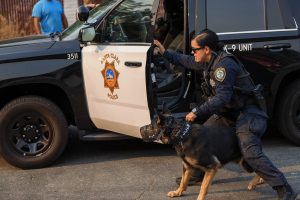It’s the most wonderful time of the year – for credit/debit card fraudsters, that is. If you’re one of their unlucky victims, as I was recently, right now you’d like to roast a few fraudsters – instead of chestnuts – on an open fire.
Last weekend somebody enjoyed a $1,500 “fraud spree” with my debit card in a San Diego mall: $900 at Nordstrom’s, $500 at Juicy Couture, plus a few incidentals like a video rental for $3.50 and a 7 Eleven smoothie for $1.61.
Credit and debit card fraud – part of the larger category of identity theft – jumps significantly during the holidays. A recent Time magazine article quotes PNC Bank reporting a nearly 20 percent increase. The reason is simple: Buyers’ behavior isn’t typical during December.
They spend more money, shop more frequently, and are often away from home – things that raise red flags on transactions the other 11 months of the year. Plus, both retailers and shoppers are more rushed and distracted – and more likely to miss signs of fraud.
While financial fraud has been with us since the invention of money, new opportunities for the criminally inclined open with every advance in electronic business and Internet communications technology. The goals of efficiency, convenience and reduced cost for businesses and their customers also makes committing financial fraud faster easier, and cheaper, according to Santa Clara Police Department’s financial fraud unit.
Recent headlines about card theft originating from tampered credit card readers at California Lucky’s and SaveMart supermarkets is just one of the latest examples.
In the course of routine maintenance in mid-November, the supermarket chain’s technicians found that debit/credit card readers were tampered with in some self-checkout lanes in 20 stores. Card “skimmers” attached to point-of-sale (POS) terminals collected shoppers account numbers and PIN codes. A few weeks later, fraudulent transactions using those cards began popping up on shoppers’ accounts – like mine. The U.S. Secret Service is currently investigating the case.
“Our internal processes for service did what they were supposed to do, before anyone called us,” says Save Mart Supermarkets Public Affairs Director Alicia Rockwell. The self-check devices were replaced by Thanksgiving “and continue to be checked vigilantly.” The bottom line, according to Rockwell, is that “If you use self-check in any of those stores, we recommend closing those accounts and cards.”
Closing accounts and changing passwords, however, isn’t the only thing you can do. Many people don’t realize that they should also file a police report.
Despite the ease cyber crime moves across geographic boundaries, “An investigation has to start somewhere,” says Santa Clara Police Department Sergeant Pat Akana. “We can then reassign or delegate the case where the theft occurred.”
SCPD gives identity theft crimes a high priority, and has two officers assigned full-time to financial fraud cases. “We look at every case,” says Detective Tom Leipelt. “We don’t have a threshold amount for investigating.” Information about cases is available online, as well as what to do after an identity theft and tips for protecting yourself from becoming a victim.
To the disappointment of those expecting high-tech forensic techniques – OK, I admit it, to my disappointment – Akana says that cyber-crime cases are investigated with old-school police methods: collecting evidence and conducting interviews to find the people making the fraudulent purchases.
The SCPD also partners with the Identity Theft Council (www.identitytheftcouncil.org), a non-profit that provides free services to identity theft victims, helping them reclaim their identities. The Council also offers services in several languages.
If you’re going to use plastic, there’s no sure-fire way to protect yourself from card theft. However, there are ways to limit the impact. In this regard, credit cards are preferable to debit cards because the money isn’t deducted from your bank account.
If you use a Visa or MasterCard-branded debit card, choose the “credit” screen prompt so that you don’t need to use a PIN. Avoid using cash machines that aren’t in a bank. And before you use any ATM or POS terminal, check that it looks the same as others in that location.
Another option is a “virtual” card such as Discover’s Secure Online Account. Paypal also offers a Visa card that lets you buy with your Paypal account without revealing any account information in the transaction.
At the end of the day, however, there’s no substitute for vigilance, says Akana. Online banking makes that easier than ever. Check your accounts often – daily isn’t overdoing it – and take advantage of features such as automatic transaction alerts from banks and payment services.
If you don’t use online banking, save your receipts and reconcile them promptly with your monthly statement – then destroy those receipts.
Another way to stay ahead of identity theft attempts – and successes too, for that matter – is by annually reviewing credit reports – free at www.annualcreditreport.com. Akana suggests checking one of the three reporting agencies every four months.
The SCPD website (scpd.org/index.aspx?page=157) provides a one-stop shop for identity theft information, resources and links. You can also get print copies of the SCPD’s Identity Theft Quick Reference Guide at the police station, 601 El Camino. Those who live or work in Santa Clara can file identity theft and fraud reports online at scpd.org/index.aspx?page=193
The U.S. Postal Inspection Service (postalinspectors.uspis.gov) offers a series of half-hour podcasts on avoiding scams and fraud, “Don’t Fall For It,” at postalinspectors.uspis.gov/radDocs/PressRoom/DFFI.html.











0 comments